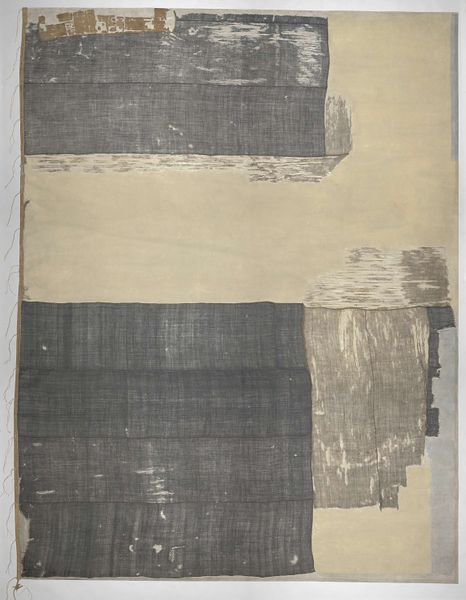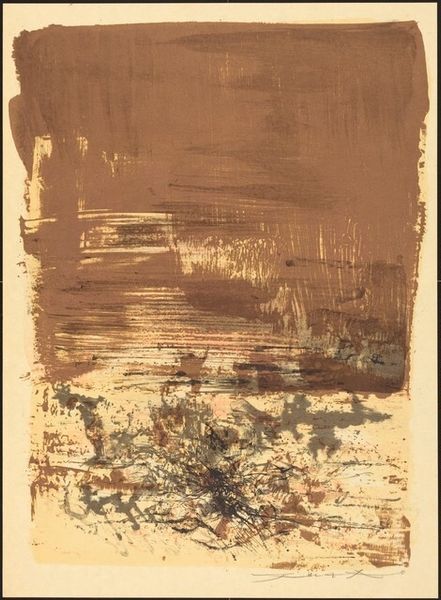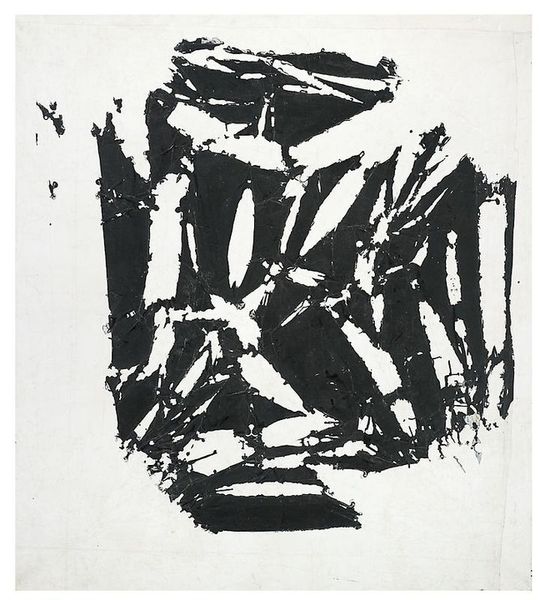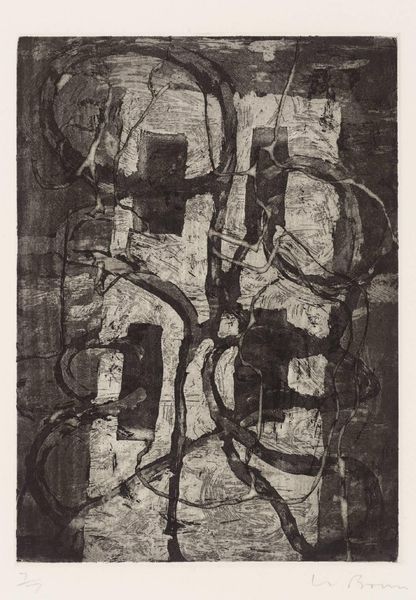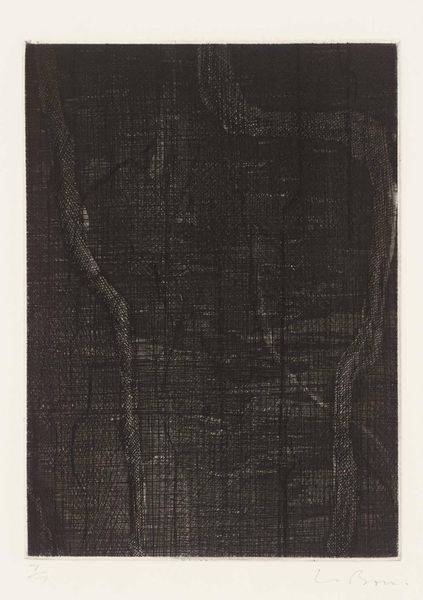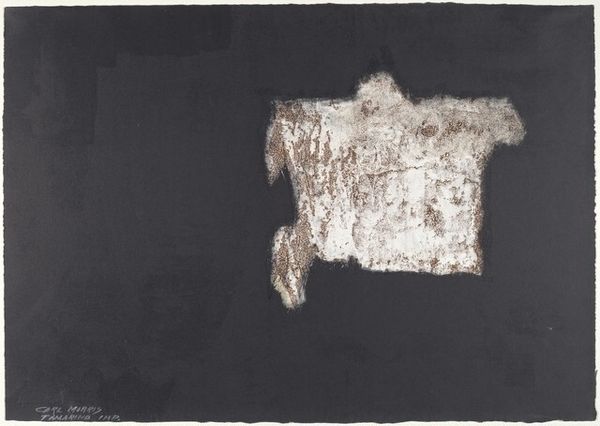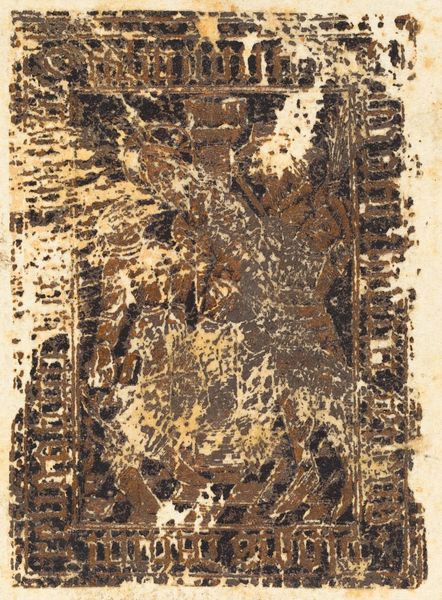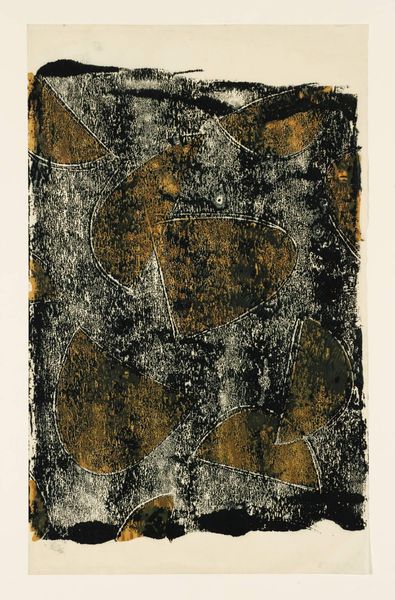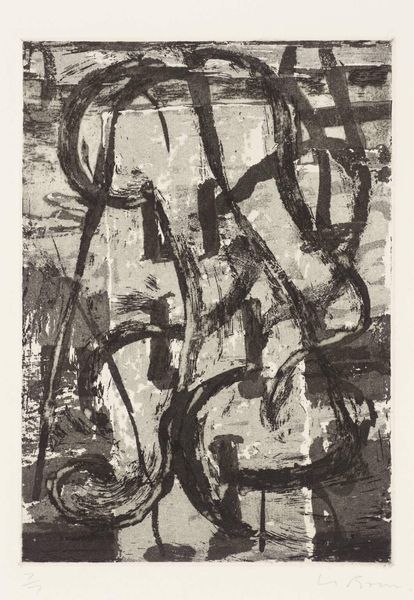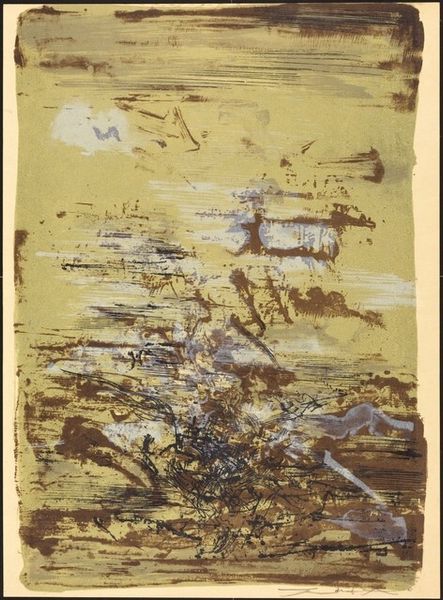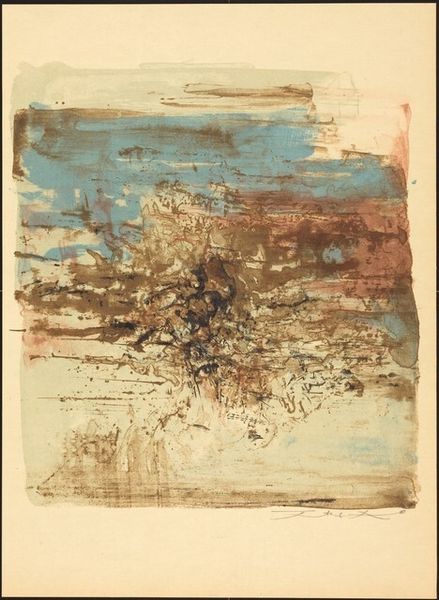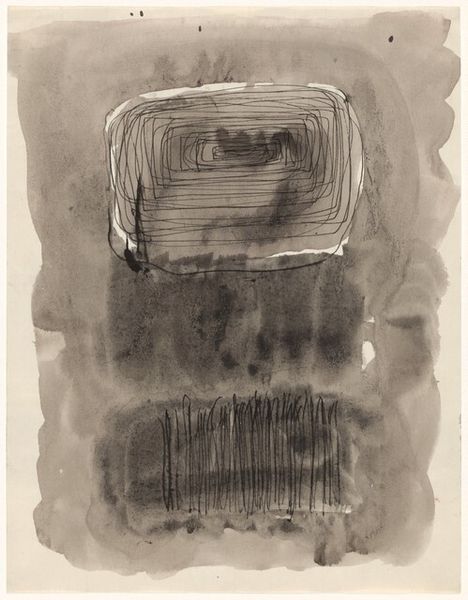
graphic-art, lithograph, print
#
abstract-expressionism
#
graphic-art
#
rough brush stroke
#
lithograph
# print
#
landscape
#
charcoal drawing
#
form
#
geometric
Copyright: National Gallery of Art: CC0 1.0
Curator: Here we have "Ruins," a 1960 lithograph by Hiroshi Akana. What are your immediate impressions? Editor: Stark. It feels monumental despite its muted tones—the artist's layering evokes age and the weight of history. Curator: The artist utilizes abstract expressionist techniques, presenting a landscape of geometric forms, all rendered with rough brushstrokes. This departs from traditional landscape depictions, inviting us to question our relationship with place and history. Consider, in 1960, the political turbulence both globally and in Japan, the very definition of rebuilding, recontextualizing, and forming identity was being questioned. Editor: That layering… you can almost feel the individual application of the pigment. I'm struck by the materiality—it highlights the physical labor involved. It’s more than just a pretty landscape. The lithographic process itself mirrors the fragmentation suggested by the subject matter. Curator: Precisely! The formal elements echo the themes of decay and reconstruction. That simple rendering and the rough quality underscore themes about societal upheaval, specifically ideas surrounding loss. It invites us to think about the socio-political forces that shape these structures, both literally and metaphorically. How does a place’s past trauma imprint upon those who move forward to rebuild? Editor: And those stark blacks against the creamy tones– it draws attention to process. This image transcends the distinction between “fine art” and printmaking. It begs consideration of how such images are created, disseminated, and ultimately consumed within larger cultural contexts. Curator: Indeed. This graphic print captures a significant transitional period through these very specific material considerations, while addressing the historical significance of that era and it’s cultural and socio-political landscape. Editor: Looking closely really makes you appreciate not just the artistry but also the thought. I'll remember this piece. Curator: It’s an image to prompt reflection long after leaving it.
Comments
No comments
Be the first to comment and join the conversation on the ultimate creative platform.
